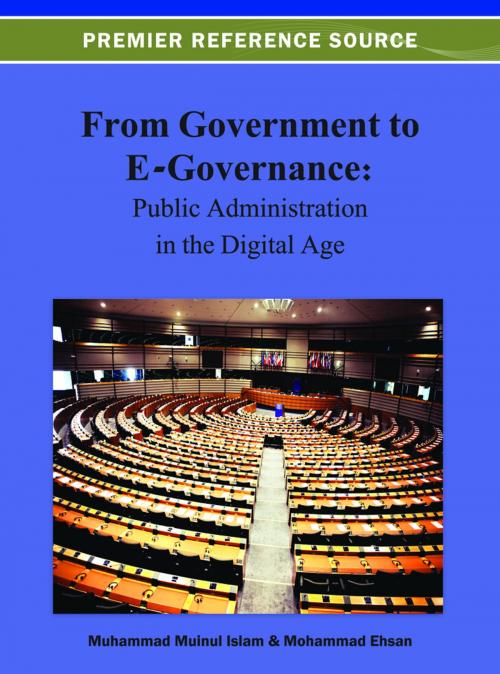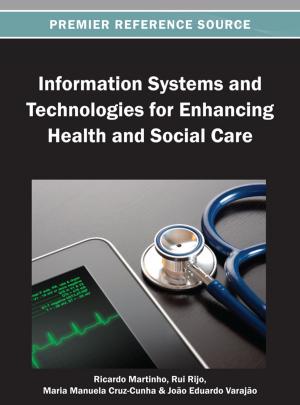From Government to E-Governance
Public Administration in the Digital Age
Nonfiction, Science & Nature, Technology, Electronics, Digital, Social & Cultural Studies, Political Science, Government, Public Affairs & Administration| Author: | Muhammad Muinul Islam, Mohammad Ehsan | ISBN: | 9781466623576 |
| Publisher: | IGI Global | Publication: | July 31, 2012 |
| Imprint: | Information Science Reference | Language: | English |
| Author: | Muhammad Muinul Islam, Mohammad Ehsan |
| ISBN: | 9781466623576 |
| Publisher: | IGI Global |
| Publication: | July 31, 2012 |
| Imprint: | Information Science Reference |
| Language: | English |
In simple terms, e-governance revolves around the idea of performing the policy, service and development functions of the government with the help of the ICTs so as to manage and steer the multi-sectoral stakeholder relations on a non-hierarchical way. Keeping this simple notion in mind, From Government to E-Governance: Public Administration in the Digital Age attempts to introduce innovative theoretical frameworks and fresh insights derived from the latest empirical research findings in the area of comparative e-governance. The impact that ICTs have in our society in general as well as on the nature, scope, understanding and practice of public administration in particular is immense. All the contributing authors in this volume, from different parts of the world, thus shed light on the way e-governance is operating as well as progressing, along with the challenges and constraints it still faces. Among many others, themes covered in the volume include citizens’ engagement, cross-governmental partnerships, IT product quality, and anti-corruption – all relating to e-governance. Researchers, academics, civil servants, policy advisers and students who seek a genuine understanding of the evolution of public administration in this era of digital or electronic governance should find this book a timely addition to the literature.
In simple terms, e-governance revolves around the idea of performing the policy, service and development functions of the government with the help of the ICTs so as to manage and steer the multi-sectoral stakeholder relations on a non-hierarchical way. Keeping this simple notion in mind, From Government to E-Governance: Public Administration in the Digital Age attempts to introduce innovative theoretical frameworks and fresh insights derived from the latest empirical research findings in the area of comparative e-governance. The impact that ICTs have in our society in general as well as on the nature, scope, understanding and practice of public administration in particular is immense. All the contributing authors in this volume, from different parts of the world, thus shed light on the way e-governance is operating as well as progressing, along with the challenges and constraints it still faces. Among many others, themes covered in the volume include citizens’ engagement, cross-governmental partnerships, IT product quality, and anti-corruption – all relating to e-governance. Researchers, academics, civil servants, policy advisers and students who seek a genuine understanding of the evolution of public administration in this era of digital or electronic governance should find this book a timely addition to the literature.















